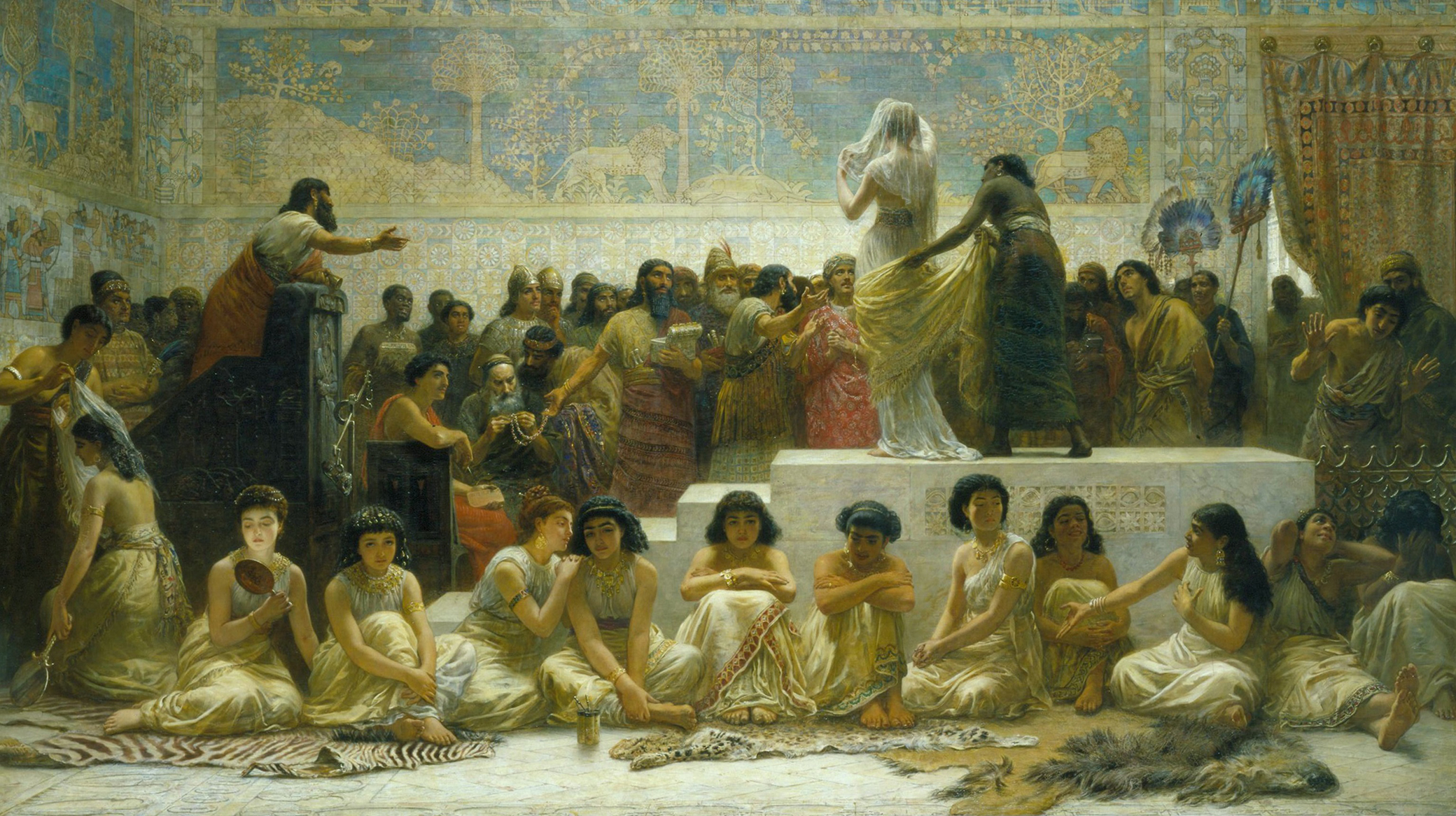
The Babylonian Marriage Market, by Edwin Long, 1875. Wikimedia Commons, Royal Holloway College, London.
Young women have always been for sale. In the fifth century bc, Herodotus describes the practice of selling Babylonian daughters at a yearly auction in his Histories. He wrote:
They used to collect all the young women who were old enough to be married and take the whole lot of them all at once to a certain place. A crowd of men would form a circle around them there. An auctioneer would get each of the women to stand up one by one, and he would put her up for sale. He used to start with the most attractive girl there, and then, once she had fetched a good price and been bought, he would go on to auction the next most attractive one. They were being sold to be wives, not slaves. All the well-off Babylonian men who wanted wives would outbid one another to buy the good-looking young women, while the commoners who wanted wives and were not interested in good looks used to end up with some money as well as the less attractive women.
The Babylonian men paid a bride price, but some of their money would come back to them because the young women were given dowries, which their husbands would administer even if they could not raid it. This exchange seems odd but was not so unusual in the classical world, where women served to cement together two male-controlled families. If a married daughter died without children, her money would go back to her family, which removed any incentive to harm her.
At the time, virginity was not always necessary to a girl’s successful marriage—the Lydians prostituted their daughters to raise money for their dowries. Because of the dangers of childbirth and high rate of early mortality in ancient Greece, it was common for wealthy relatives to provide not just their daughters but also their poor relations with dowries. Athenian law even required that the State dower poor women of just passable attractiveness; teeth were all that were required. Because Athens was under constant threat from its rivals, it depended on its young women to provide it with a constant stream of new soldiers.
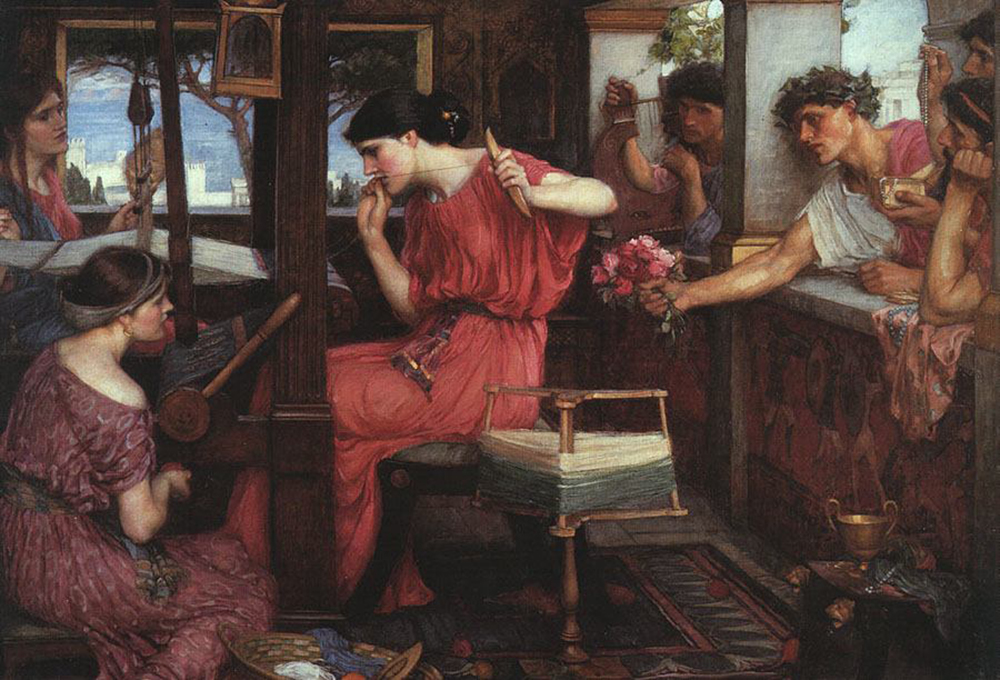
Classical literature is filled with accounts of creative daughter disposal. In some memorable verses of The Odyssey, the father of Penelope, Odysseus’ wife, then thought to be a widow, urges her to marry the suitor with the most gifts. Greek fathers took care not to raise more daughters than they could dower. Outright infanticide was abhorrent to ancient Greeks, but they did practice “exposure,” wherein parents intentionally left unwanted infants exposed to the elements. They believed that the gods could choose to save the abandoned children, thereby eliminating their agency while achieving their aims. Husbands were not permitted to run through their wives’ dowries but neither could the wife. A Greek woman’s dowry yielded about 18 percent per year, and if the couple got divorced, either party could request the dowry. It was returned to a woman’s guardian or, in certain cases, kept by the husband, who paid 18 percent interest to his former wife’s guardian for her support. The wealthier the family, the more likely it was that a marriage would take place between two young first cousins. Such marriages keep money in one family and tended to correlate with periods of cultural instability, when power was held by a few important families. Cousin marriage was particularly popular among the higher echelons in Elizabethan England, the Antebellum South, and in late eighteenth- and early nineteenth-century Britain.
Greek girls who died in childhood were mourned specifically because they did not fulfill their destiny as wives and mothers. Their epitaphs make reference to their failure to marry, and the girls were quickly writ into myth. Like Persephone before them, they were considered married to Hades and dwelled, as wraiths, in the underworld.
In the Roman period, women did not fare better. Catullus sums up the Roman attitude toward marriage, writing, “If, when [a young woman] is ripe for marriage, she enters into wedlock, she is ever dearer to her husband and less hateful to her parents.”
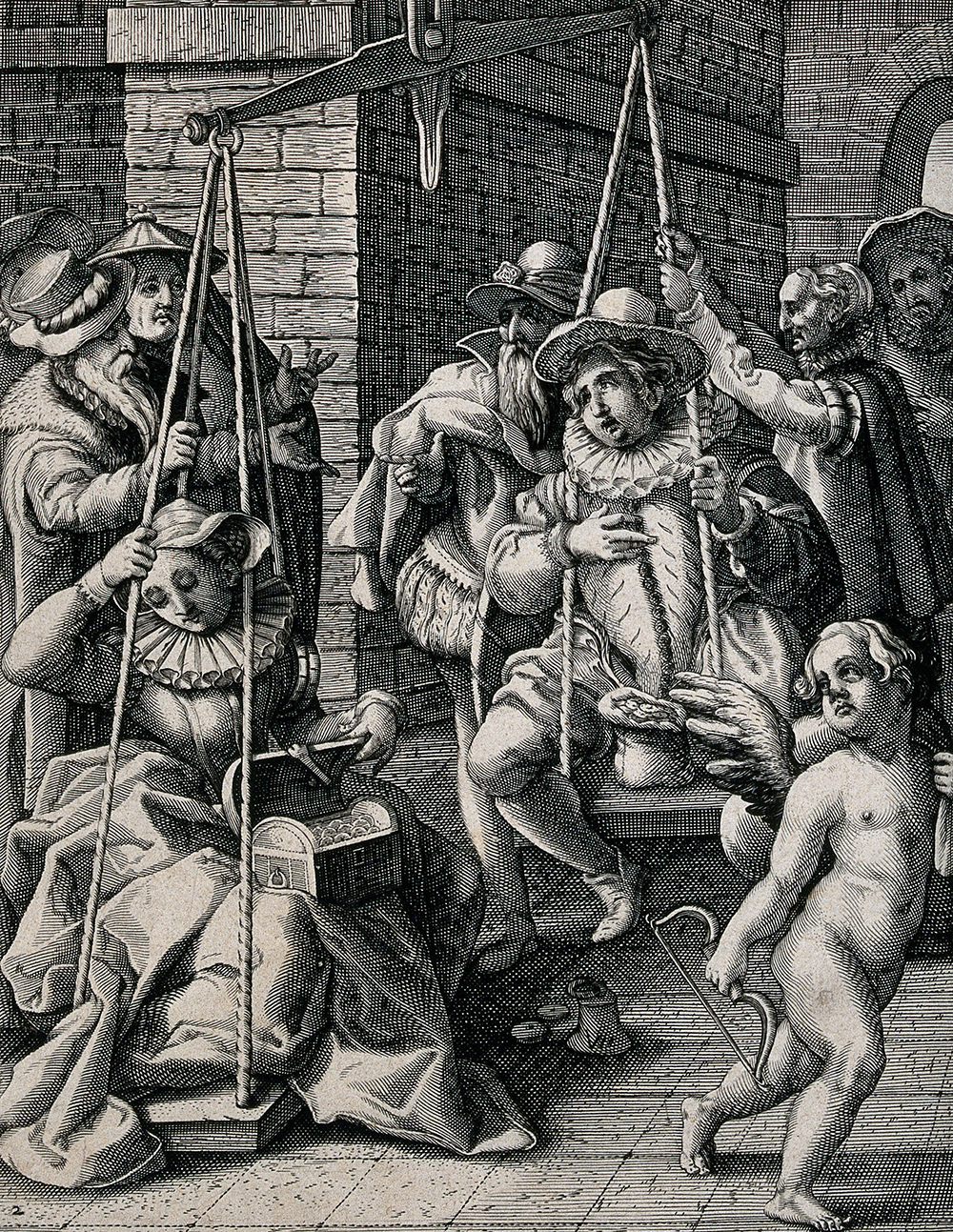
The middle class continued to sell their daughters at regional markets throughout most European countries during the Middle Ages. For the upper middle classes, the social stasis of the period made marrying an heiress one of the only means to improve one’s social status, and it was nearly impossible to do without deception. The middle classes began to consult marriage brokers—a growing cottage industry in Europe—who would help them plot their rise, reconstruct their family histories, then help them relocate in order to achieve success in another part of the country. If a woman did marry up, she would find that she had much less control over both her body and her daily life—where she walked and even what she ate—than she had in a middle-class environment. In the upper classes, the legitimacy of heirs continued to be of primary importance, and as such women’s movements were intensely regulated.
Women were progressively more visible during the Renaissance. Increased trade created a new culture of conspicuous consumption, propped up by merchants and explorers who transported new goods through Genoa and Venice, Zanzibar and Constantinople, outward to European capitals and the known world. Newly available luxury goods made life easier and more enjoyable—tobacco, tea, coffee, silks, and spices facilitated a culture of male comfort in which wives and daughters played an important though entirely passive role. In ancient Greece and Rome women were kept mostly in the home, but during the Renaissance men put their velvet-swaddled wives and daughters on display, trotting them out in public, where they would often sit separately, saying little if anything but fulfilling a necessary decorative function. A woman’s beauty, or wealth, was most of all a statement about the social status of her presiding male, be he husband, father, or brother.
For much of the Middle Ages and into the Renaissance, sumptuary laws on food and goods defined and limited social space. By legislating who could obtain specific fabrics, foods, drink, and other luxuries, governments prevented servants and the middle classes from masquerading as aristocrats by denying them access to the materials necessary to appear richer than they were. Pre-Reformation Europeans were just beginning to let go of feudal social organization. Though more people now lived in cities, family patriarchs had long made decisions for their large clans and were not interested in giving up a privilege that had served them so well. Daughters were married to create important and lasting connections between families. Those who could not be married off in a way that would benefit the clan were often forced into nunneries. For a noble family, sending a daughter to a convent or forcing her into spinsterhood was far preferable to tainting a family line by permitting her to marry beneath her station.
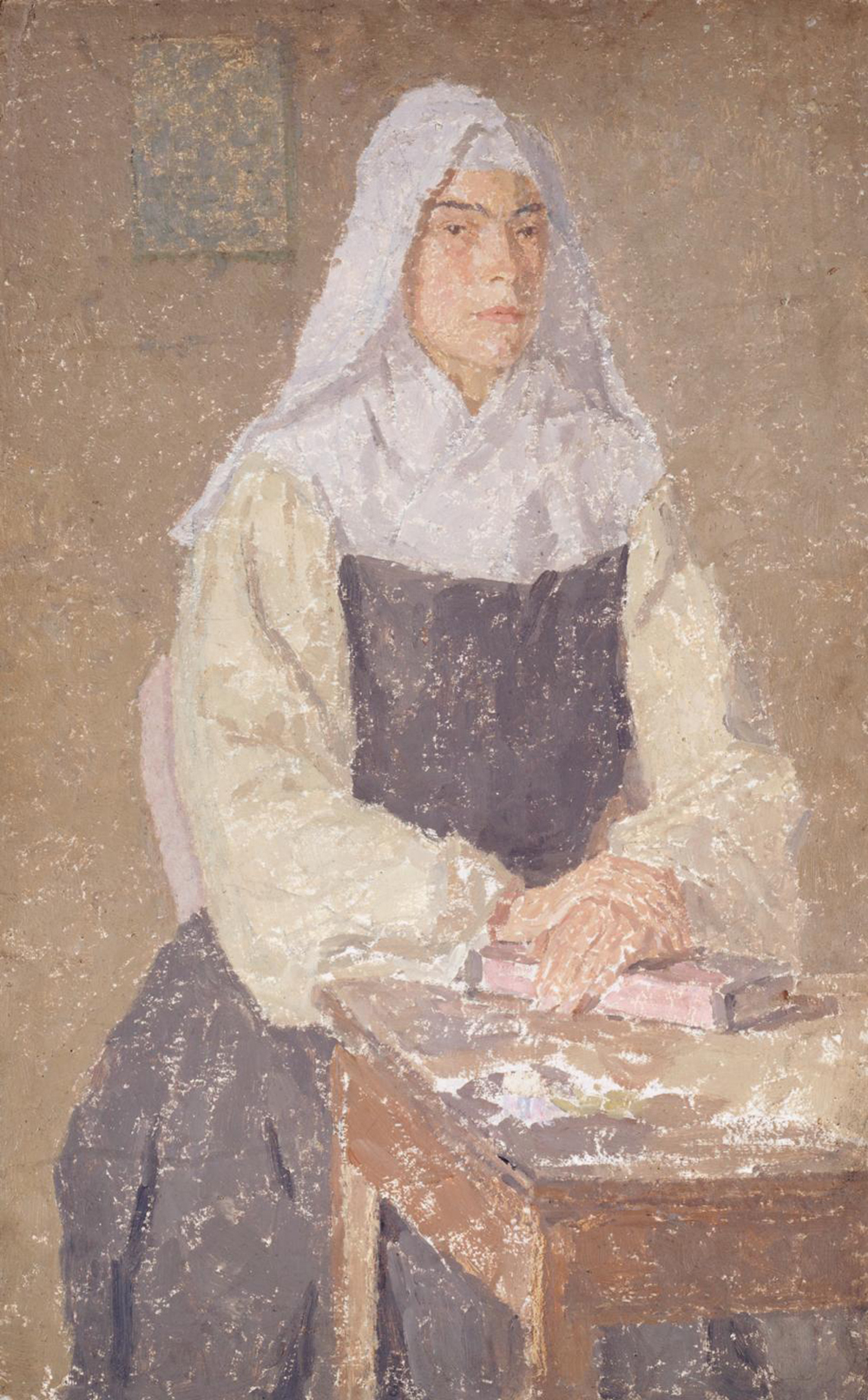
This system of dispensing with daughters worked peaceably for hundreds of years, until Henry VIII came to need a son and heir. When his attempts to have his first marriage, which had produced no sons, annulled by the pope failed, Henry charged ecclesiastical and secular legal scholars in England with finding a way to divorce his consort Catherine and marry his pregnant mistress Anne Boleyn. Their solution was divorce and breaking away from the Catholic Church. Henry began the violent dissolution of Catholic monasteries in 1536. It lasted for four years, during which the crown plundered church lands, sold them off to rich allies, and used the surplus cash to wage dubious wars in France. For wealthy young women, newly Anglican, there was an additional change, perhaps the single most significant social change women would see until suffrage. Their safe haven—the convent—was now gone.
The absence of nunneries sent numerous marriageable aristocratic young women into circulation. When once they would have been in the country, awaiting the marriages arranged for them, or preparing to enter a convent, these young girls were now brought to court, which is where they were most likely to find husbands. By the time Henry’s daughter Elizabeth I began her reign in 1558, the atmosphere surrounding marriage had a new urgency. Elizabeth’s rule began in religious chaos after her predecessor, her half sister Mary, violently restored Roman Catholicism to England. Elizabeth spent the better part of her first years on the throne fighting for her father’s Protestantism in an effort to fend off those who wished to depose her. Her legitimacy was questioned with every decision she made, and she understood that her courtiers were her key to maintaining the throne. She tightened her control over the aristocracy by reducing its size to a new low. She stripped disloyal aristocrats of their titles or made it known they were not welcome at court.
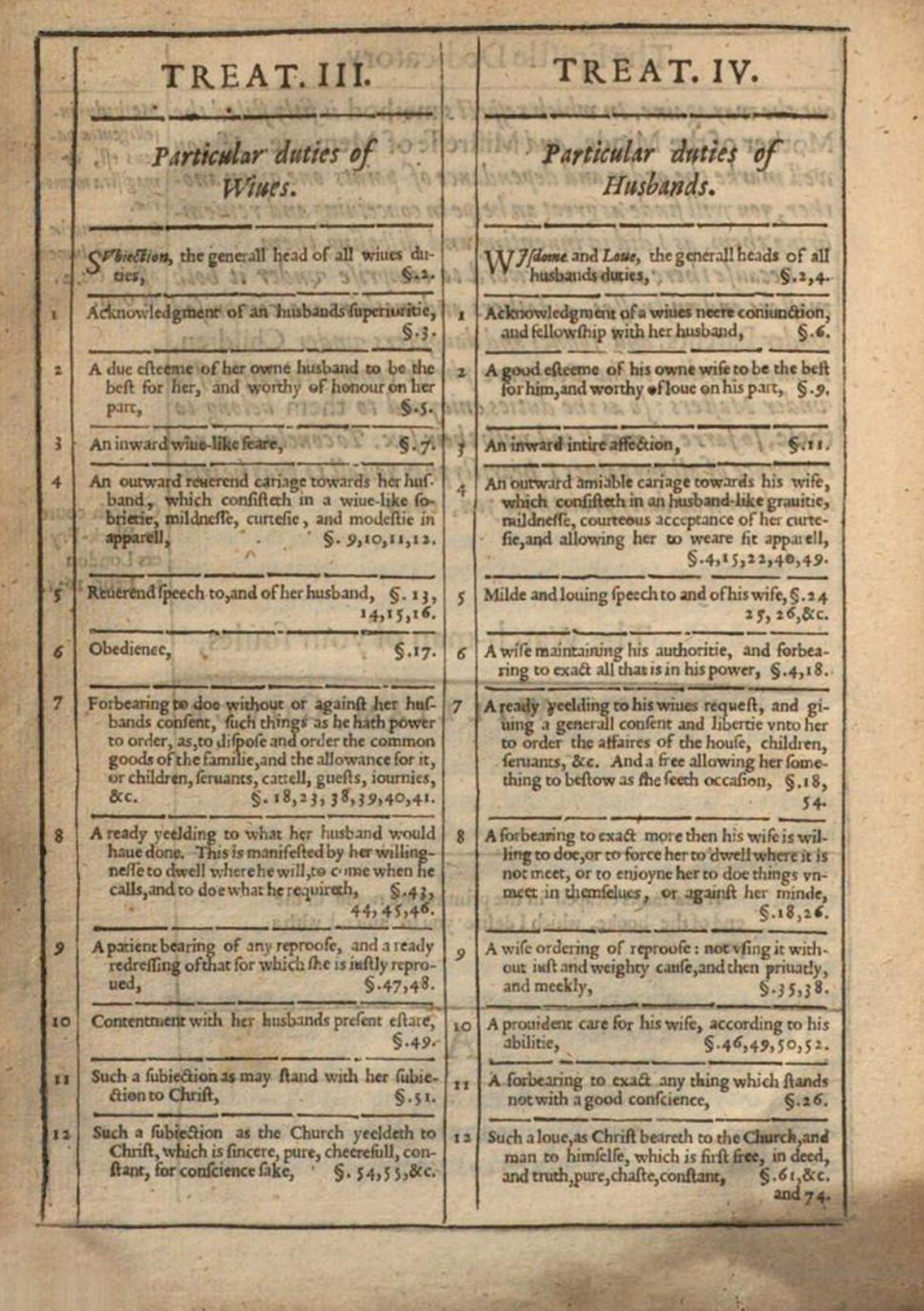
It was against this tumultuous backdrop that Elizabeth, in an effort to form beneficial social and political alliances, began having young ladies ceremonially presented to her at court. These presentations were small affairs and limited to the daughters of Elizabeth’s most important courtiers. They took place in the queen’s “withdrawing room,” a private room, but located next to larger public rooms, where she could go with a smaller party. The girls were led from a public stateroom into the smaller adjoining room at Hampton Court palace, so that other courtiers would know who was being favored. At the more private ceremony of presentation, the young girls curtsied to the queen. The young girls had a vivid experience of being watched and assessed, enhanced by the fact that of the roughly 1,500 people in regular attendance at court, only fifty were women. These presentations came to be referred to as “drawing rooms,” and they engendered a curious experience that blended ostentatious display with the familial and private, a mix that would continue to characterize the debutante ritual for its duration
Many of the presented young women served her as attendants and became intermediaries between Elizabeth and the wider circle of her court. They helped Elizabeth to exert control over the nobility by creating an elegant buffer between the monarch and her courtiers. In order to present a petition to the queen, one first gave it to a lady-in-waiting, along with a fee that the lady in question would determine based on her closeness with the queen. Elizabeth encouraged her ladies to charge exorbitantly for this service—not so much because they’d have some independence, but so they would have enough money to be able to gamble with her. She also regularly rejected petitions based on their lack of generosity toward her ladies. The queen could also be capricious—Elizabeth’s ladies-in-waiting could not marry of their own volition. Elizabeth Vernon spent a week in prison (with her new husband the Earl of Southampton) for marrying without the queen’s permission. Lettice Knollys was banished permanently for marrying Elizabeth’s favorite courtier, Robert Dudley, Earl of Leicester. When Elizabeth discovered that another lady-in-waiting, Mary Shelton, was secretly married, she attacked her and broke her finger.
Elizabeth’s social standards and rituals persisted after her death, with queens taking over control of drawing rooms and social presentations even when there was a king on the throne. Elizabethan presentations-at-court served a very clear political purpose. Though they bore little resemblance to the feverish social theater that characterized the fully developed debutante ritual of the nineteenth century, these court presentations provided the foundation for modern debutante culture and served, too, as its myth of origin. They show the important link between society and politics, a symbiotic relationship that only deepened as the ritual became institutionalized and spread outward to all corners of the British Empire. Elizabeth’s backroom maneuvers—quick conferences with her ladies or political advisers—provided the precedent for the many political meetings that took place at debutante parties in later centuries, and emphasized the soft power of social settings, which were controlled by women who understood that the way to power was not always hard work or even fortunate birth, but judicious conversation next to a sloshing punch bowl or quivering trifle.
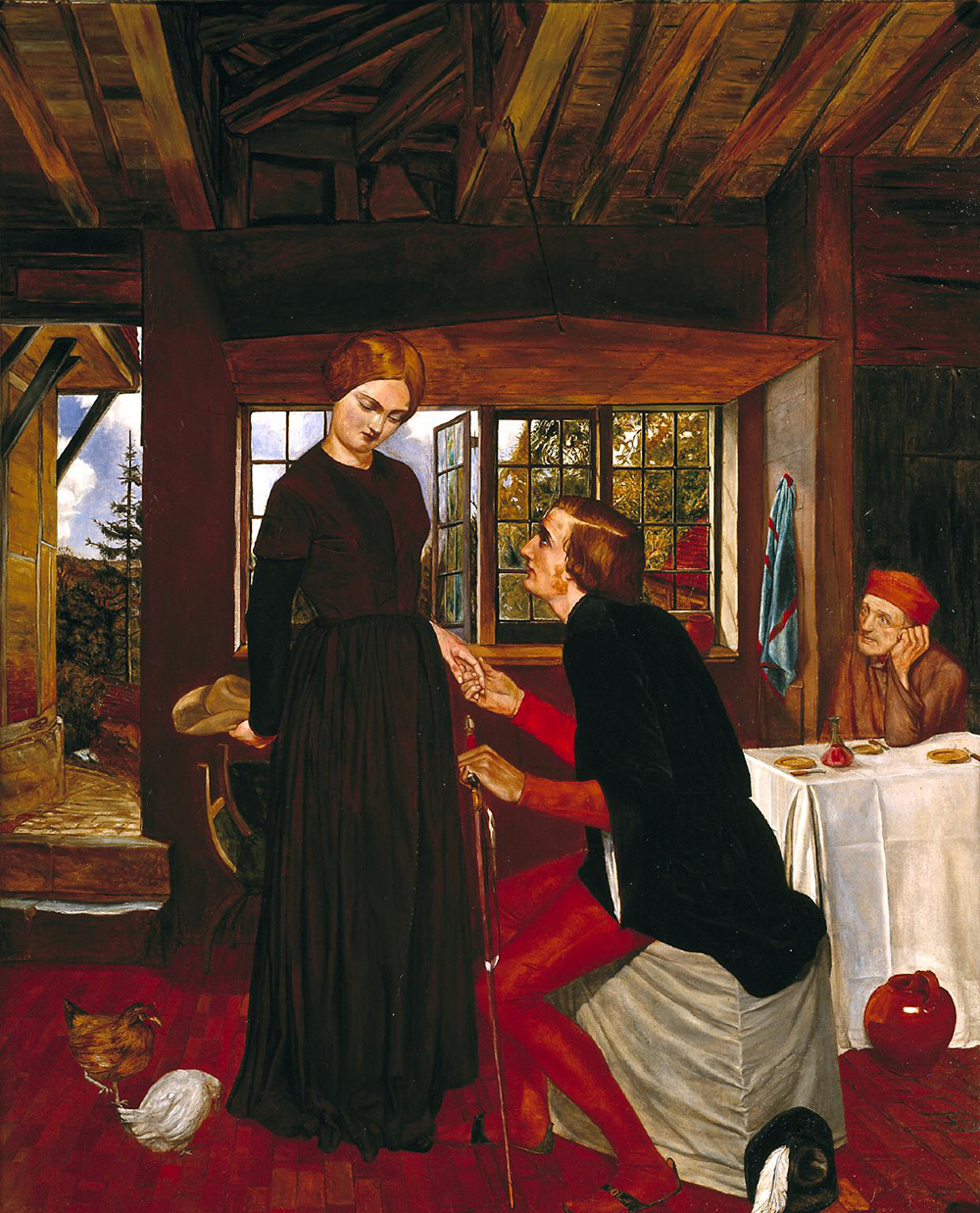
The Stuart monarchs who followed Elizabeth continued the tradition of the drawing room (“with” was dropped from “withdrawing room” in the late seventeenth century), which retained its function as a matchmaking tool. Elizabeth’s successor, James I, arranged the marriage of his favorite courtier, the charming spendthrift James Hay, to Honoria Denny by granting Honoria’s reluctant father a title and royal patent. While these high-level marriages took strategy, marriage law remained chaotic. There was no legislation that defined marriage, and there were no protections for women after they were married. Rather, the absence of law meant that women might be forced into marriage by their fathers, married by capture, or tricked into marriage. The age of consent to marriage was twelve for women and fourteen for men, and contracts were often made during the “unripe years.” It was a particularly dangerous time to be an heiress. During these years women could inherit property. Inheritance law was not clear on whether her property would become her husband’s upon marriage. Without knowing if they could control their property, many women resisted marriage. Restrictive regulations for daughters intensified after they were wives, especially if they were considered to have broken proper codes of behavior. If a wife were to be convicted of adultery, she would lose her dowry or marriage portion and her husband could make a good case that she could punitively lose her property as well. There was no comparable financial forfeiture for adulterous men, and courts habitually disbelieved women who tried to defend themselves against claims of adultery. It is not difficult to explain widespread female acquiescence.
Excerpted from The Season: A Social History of the Debutante by Kristen Richardson. Copyright © 2019 by Kristen Richardson. Used with permission of the publisher, W.W. Norton & Company, Inc. All rights reserved.
